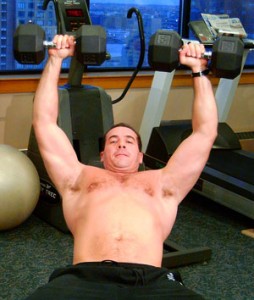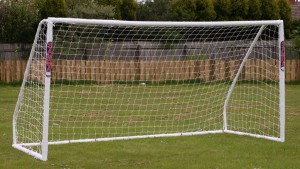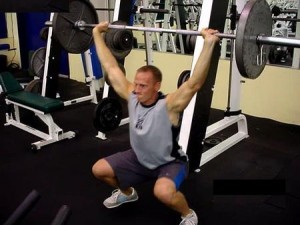 There is a lot of confusion and misconception on how long one should rest between sets. Some people advise 30 seconds, others 1 minute, and then there are even people that rest 5 minutes or more between each set. Other training methods disregard the goal of the training program and just give a basic rest period, like 3 minutes. That makes no sense whatsoever and I am going to show you why. So what is the right answer?
There is a lot of confusion and misconception on how long one should rest between sets. Some people advise 30 seconds, others 1 minute, and then there are even people that rest 5 minutes or more between each set. Other training methods disregard the goal of the training program and just give a basic rest period, like 3 minutes. That makes no sense whatsoever and I am going to show you why. So what is the right answer?
When training for muscles size and strength you are using a different energy source than training for power. So the first thing you need to do before you start lifting is decide what you are trying to accomplish. Do you want to increase your muscle mass? Are you training for endurance or do you want to work on power? When you decide what you want to focus on then you start developing your training program.
All are great training goals but to obtain maximum results you need to be challenging your muscles and energy system properly. The NSCA defines resistance training as: “resistance training includes performing various weight training exercises for a specified number of repetitions (depending on the main desired outcome) generally for multiple sets, with a defined rest period between those sets (again depending on the main desired outcome).
Let’s look at some different types of programs.
Developing Strength Training Programs
 When you are aiming to increase the muscle cross-sectional area or increase muscle mass, this happens because you are adding the amount of protein to the individual muscle fibers, this then makes the muscle larger. Bodybuilders, certain athletes, and people in general aim for this result for looks and function.
When you are aiming to increase the muscle cross-sectional area or increase muscle mass, this happens because you are adding the amount of protein to the individual muscle fibers, this then makes the muscle larger. Bodybuilders, certain athletes, and people in general aim for this result for looks and function.
The best way to get these results is to follow a program that uses an 8 – 12 repetition set with shorter rest periods. The rest periods should be 1 minute. This is a highly debated topic but for an increase in muscle size, 1-minute rest period is sufficient.
The NSCA conducted a study on rest periods and its effects on muscle mass size. The results were that when a person rested for 1 minute between sets it triggered a growth hormone, a main hormone for muscle tissue growth and repair, to be released.This is because the muscle had to recruit more fibers to produce the high force the person was asking for.
If you allowed the muscle to recover too long, then you would not get this result and you would not challenge the muscle to increase its protein production amount. This shows that there are specific training patterns that must be followed to gain the desired results.
How Do You Focus Your Training on Endurance?
 When you are training for endurance you need to focus on performing exercises that mimic the desired aspects of the outcome you are looking for or what improvements you are trying to make. For example, are you looking to improve the distance you are running or increase the time you play in your soccer league? Your program must be designed with that goal in mind so that your indoor training can be continued on the field.
When you are training for endurance you need to focus on performing exercises that mimic the desired aspects of the outcome you are looking for or what improvements you are trying to make. For example, are you looking to improve the distance you are running or increase the time you play in your soccer league? Your program must be designed with that goal in mind so that your indoor training can be continued on the field.
Even though you are not mimicking specific movements on the field, the muscular stimulation can be carried over. For optimal results the number of repetitions that should be performed are 12 to 15. The rest period should be between 30 and 45 seconds.
Why is the rest period so short? The answer actually refers back to training for strength and muscle size. When a person is training for endurance they are training their body to continue one movement for a long period of time. So when the body gets tired it needs to recruit other energy sources and muscle fibers.
The purpose of training is to make your body more efficient so the next time you are playing soccer you can go strong until the end of the game. There is little to no rest in endurance sports, which explains the short rest period when you are in the weight room.
Training for Power
 Power training is made up of explosive movements unlike endurance and strength training. The body needs to exert maximal power to get the weight moving. Some examples are plyometrics and Olympic lifts. Plyometrics are supposed to be performed with only the body weight but there are some variations to that. On the other hand, the NCSA recommends performing Olympic lifts with a weight that is 70- 80% of one’s maximum lifting capabilities.
Power training is made up of explosive movements unlike endurance and strength training. The body needs to exert maximal power to get the weight moving. Some examples are plyometrics and Olympic lifts. Plyometrics are supposed to be performed with only the body weight but there are some variations to that. On the other hand, the NCSA recommends performing Olympic lifts with a weight that is 70- 80% of one’s maximum lifting capabilities.
The goal is to improve the power or force one’s body generates in the shortest amount of time. When performing power exercises the repetitions should be between 4 to 7. This is because form plays such a huge role and when a person is tired they have a high chance of being injured. So from this I am sure you can guess how long you should rest between sets.
When training for power you need to have full recovery before you start you next set. That means you should rest for 3 to 5 minutes. The body needs to restore its energy sources and muscle fibers before starting again. Power is an explosive movement that recruits type IIa fibers, as fast as possible. So to make this efficient, you need to allow optimal rest to then challenge the system again.
Putting It All Together
The NSCA states that, “The program must be designed with specific performance goals in mind. This involves overloading the physiological systems sufficiently to induce adaptation of those physiological systems. The performance goals will dictate the type of training that is engaged.”
Rest is important because it is directly related to the goals you are trying to achieve. There are so many misconceptions out there on how much rest to allow, if any rest, or if to allow full recovery. But as you have now learned you need to enter the weight room with a goal in mind. What are you trying to get out of your workout?
Next time you hit the gym make sure you challenge your muscles and rest for the allotted amount of time for your goals. This will allow you to see optimal results and train your body to be more efficient. Then enjoy the benefits of improvement!